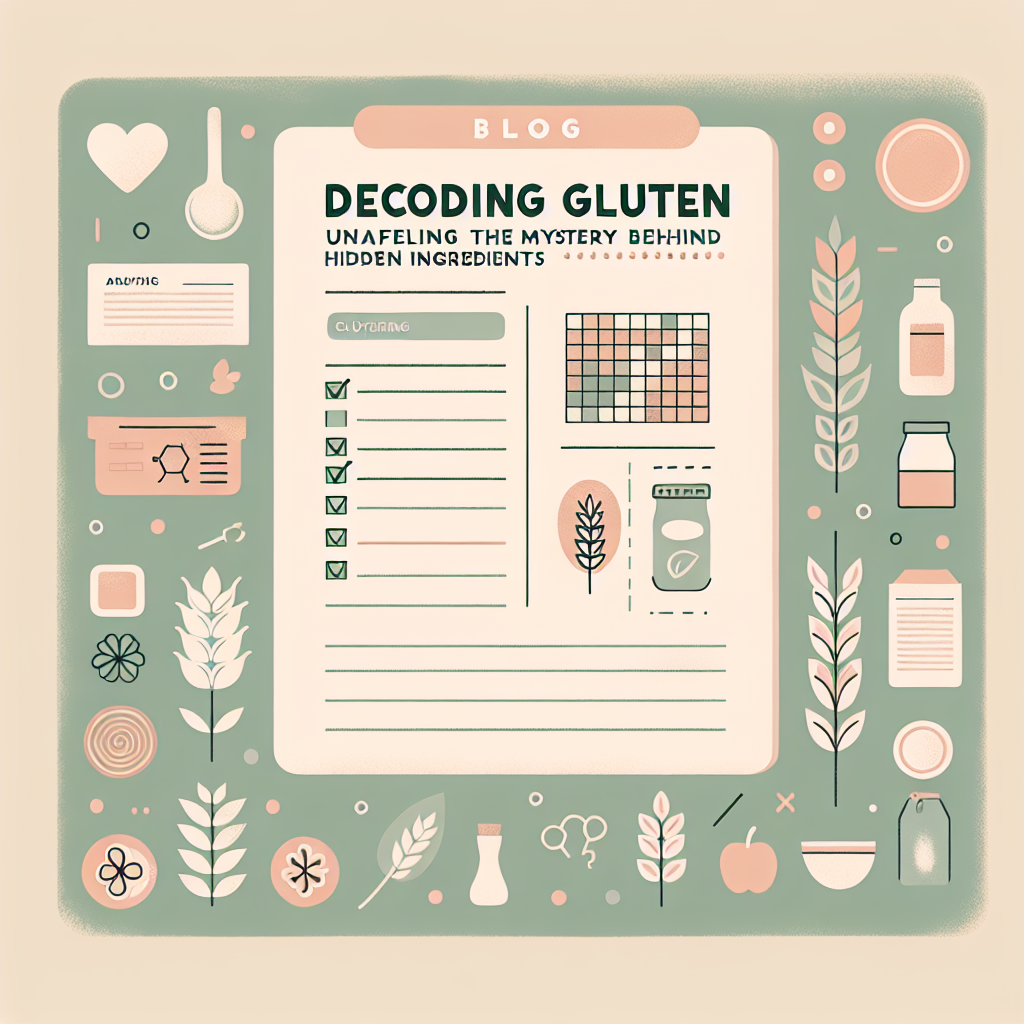Have you ever wandered the food aisles, scrutinizing food labels, feeling overwhelmed by the big scientific names for simple, everyday ingredients? Or perhaps felt a flush of heat coursing through your veins as you unwittingly took a bite of the sandwich, only to later discover it contained a smidgen of gluten grain? Trust me, you’re not alone! Navigating the world of gluten-free eating can often feel like tracing the path of a particularly labyrinthine maze.
That’s why today, we’re gonna delve into the world of gluten “aliases”. Gluten is a sneaky troublemaker who often disguises itself under different garbs, hiding in plain sight in our food labels. Being well-informed is your biggest weapon against unintentional gluten consumption, so let’s get started!
Let’s navigate the food maze together.
For starters, here’s a practical tip: remember that gluten is a general name for the proteins found in wheat, barley, and rye. Thus, any derivative, variation, or type of these grains might contain gluten. Yes, that includes ‘wheat flour’, ‘barley malt’, or ‘bulgur’.
But it’s not always that straightforward. Oh, how I wish it were! These few grains have given birth to a host of ingredients that are used in food production. ‘Malt Vinegar’? Derived from Barley. ‘Graham Flour’? That’s wheat! But when you read ‘hydrolyzed vegetable protein’, it doesn’t scream gluten, does it? However, if the source of this protein is wheat or barley, you are looking at something potentially harmful for your body.
A well-meaning friend serving you soy sauce at a summer backyard BBQ might cause you far more pain than they imagined. Most commercial soy sauces are brewed with wheat and contain gluten! But do not despair, for there are gluten-free variations available – you just need to look in the right places.
But how do you find these right places? Our past posts are treasure troves of gluten-free wisdom. From ‘Understanding Gluten-Free Labels’ to ‘How to Pick Healthy Gluten-Free Products’, you’ll find the keys to crack the gluten code.
Learning ingredient names is just the first step. You also need to understand that gluten can creep into your food not just through the ingredients, but also through the process of food making or serving – terms like ‘cross-contamination’. For instance, a salad seems like a safe bet, right? But has the fork used to toss the salad touched a gluten-containing food? Did they cut the vegetables on the same chopping board where they just cut a baguette? These are valid questions to raise when eating out.
These hidden culprits make it crucial to ask for a detailed ingredient list when eating out or shopping for groceries. But do not forget to request information on food-handling practices and preparation methods. An establishment that respects and accommodates your dietary needs will not hesitate to provide this information.
Unfortunately, not everyone in your social circle might be as informed about your lifestyle. It is essential to communicate your needs openly and even share some basic dos and don’ts with your loved ones. They should understand why you can’t just pick out the croutons from your salad and why you would prefer they set a separate tray for you at the potluck. Our blog post on ‘How to Navigate Social Events as a Gluten-Free Eater’ provides some really helpful tips on initiating these conversations.
Last but not least, walk in with a positive attitude. It might sound cliché, but trust me, approaching dietary changes with confidence will smoothen the sometimes bumpy ride to a gluten-free life.
The food industry is steadily becoming more inclusive, no doubt. Gluten-free alternatives for most common foods are available and you can enjoy a wholesome dinner or even a scrumptious dessert without worrying about gluten sneaking onto your plate. However, the key lies in fostering understanding and awareness about gluten and its various forms, reminding ourselves that managing gluten-intolerance is not restrictive but an empowering lifestyle choice.
In the upcoming blog posts, we will continue expanding on topics that ease your gluten-free journey. Feel free to drop a comment below if you have a specific query or topic you’d like us to address. Until then, keep sleuthing those food labels, you gluten-free Sherlock!
**Category: Educational Guides**


